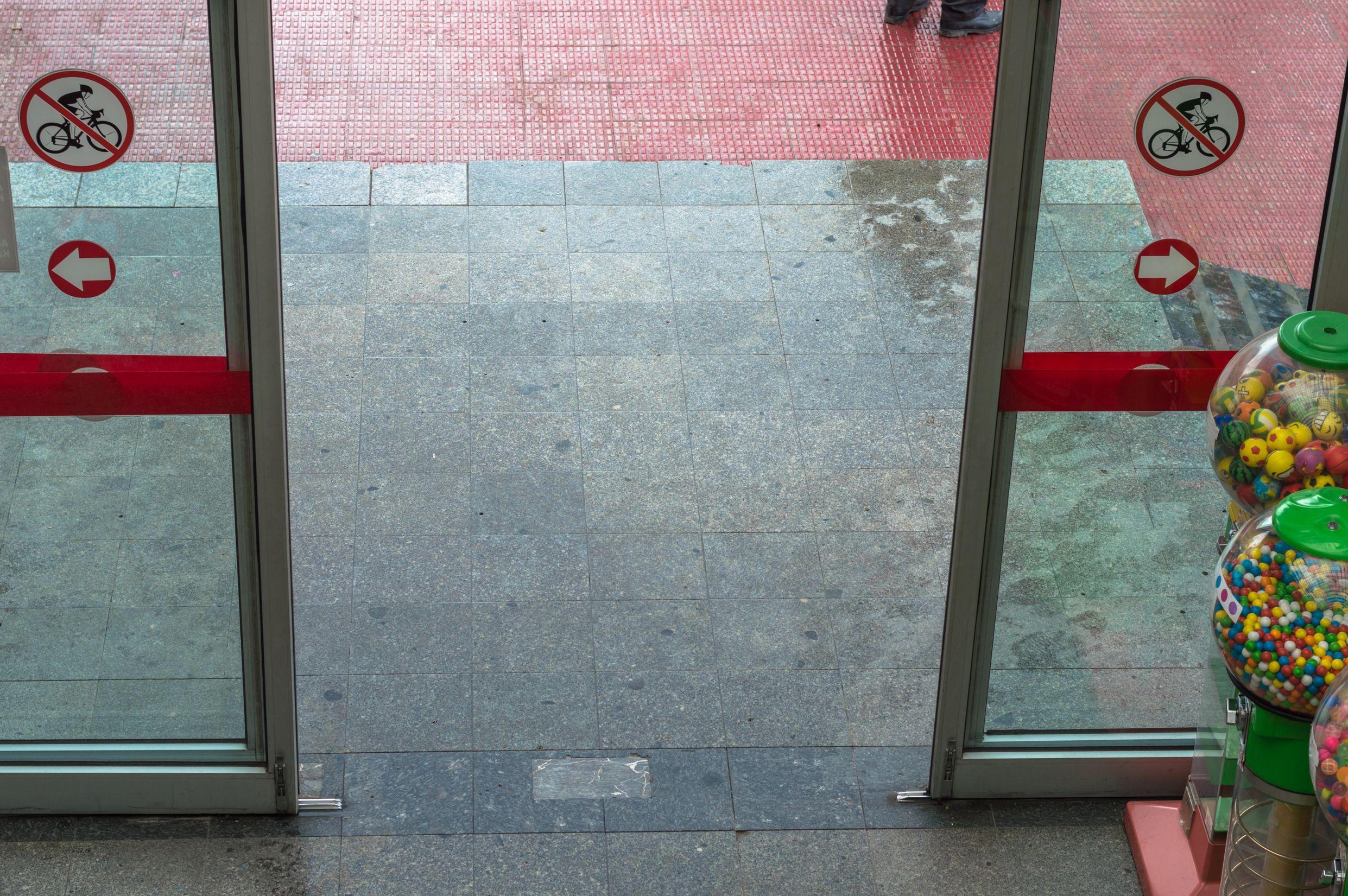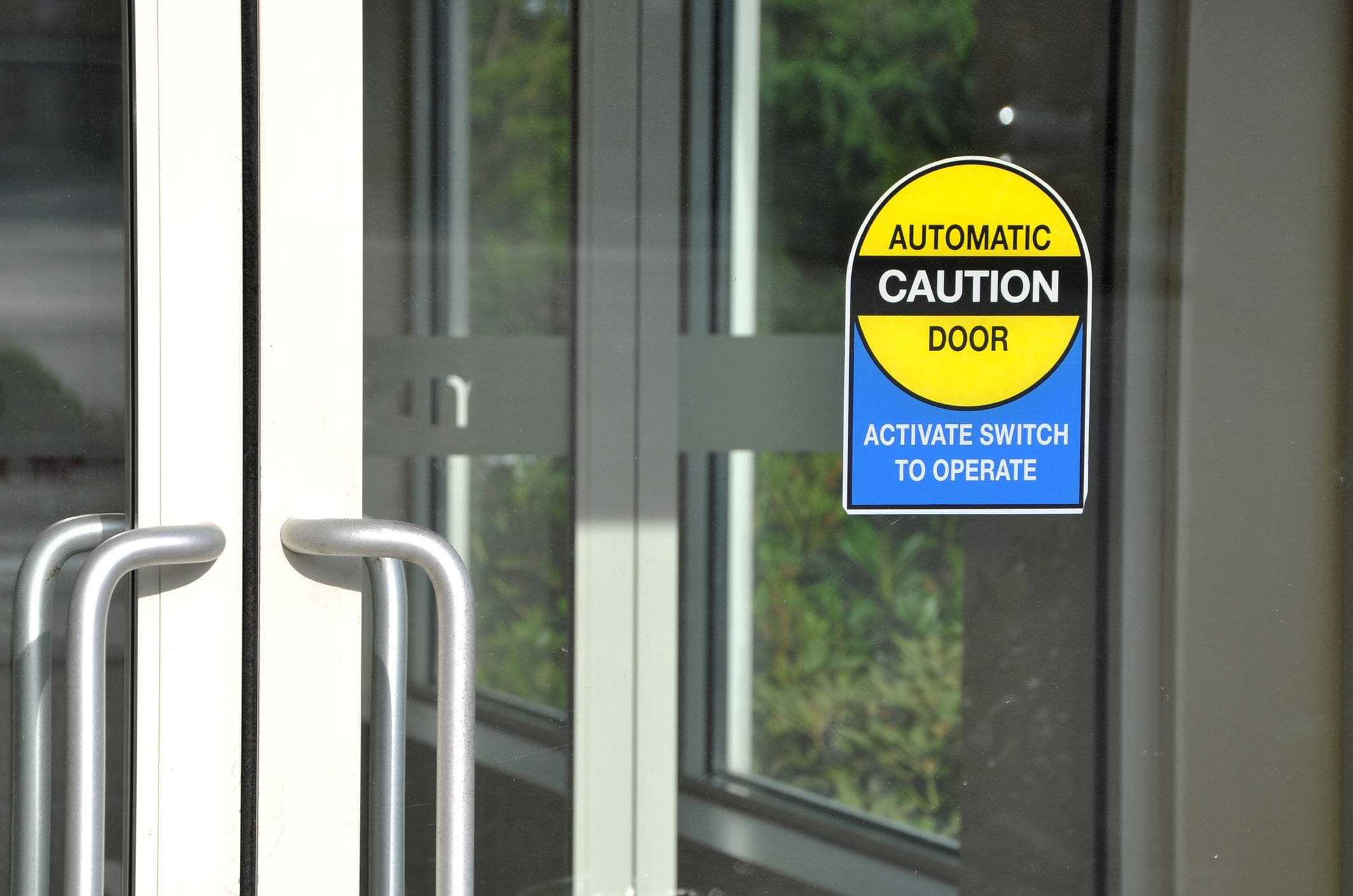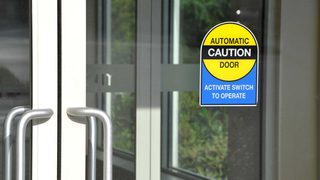Pedestrian Door Accessibility Compliance Standards: Single and Double Doors
If you own a commercial business, it’s important to familiarize yourself with the pedestrian door accessibility standards outlined by the Canadian Standards Association (CSA). These standards have been developed through an industry-leading, consensus-based approach and aim to make the world safer and more accessible. Here’s an overview of what you need to know.
Door Width
Pedestrian doors should be wide enough to accommodate people using wheelchairs, pushing strollers, and making deliveries. The opening size should be at least 35 inches, but no more than 48 inches.
Furthermore, there must be sufficient level space on either side of the door to manoeuvre a wheelchair. For example, unless equipped with a power-assisted door opener, swinging pedestrian doors must have an unobstructed latch-side clearance of at least 24 inches on the pull side and at least 12 inches of clearance on the push side. This allows individuals using mobility devices and pushing strollers to steer clear of the physical door swing when opening the door.

Door Handles
Door hardware such as handles, pulls, latches, and locks should not require fine finger control, tight grasping, pinching, or twisting of the wrist to operate. Additionally, pedestrian door handles must be between 34 and 48 inches above the floor and shouldn’t protrude more than four inches from the door.
Moreover, the handle must not require more than five pounds of force to open and be easy to grasp and manipulate with one hand. D-shaped door handles, ladder pulls, and lever-operated door handles are suitable. However, knobs and thumb-latch handles should be avoided. In addition, door handles should be usable from both sides and have a pronounced colour contrast to differentiate them from the door itself.
Door Surface
The surface of manual pedestrian doors must be smooth on the push side and have no protruding hardware within 10 inches of the floor or ground. This requirement prevents walkers, canes, wheelchairs, and other devices from getting caught on anything sticking out from the bottom face of the door.
Door Closers
In general, pedestrian door closers must not have a resistance of more than:
- 38 Newtons (8.5 pounds) for exterior hinged doors
- 22 Newtons (4.6 pounds) for interior hinged doors
- 22 Newtons (4.6 pounds) for sliding or folding doors
If the door requires more than 38 Newtons of resistance to open, you must install a self-closing door or power-assisted door opener. In addition, the sweep period of door closers must be adjusted so the door takes three seconds or more to move from an open position of 90 degrees to a semi-closed position of approximately 12 degrees.

Double Doors
To improve accessibility, double pedestrian doors must not have centre posts. Additionally, if a doorway has more than one independently operated leaf, at least one active leaf must be 35-inches and have sufficient manoeuvring space for a wheelchair or scooter. If only one door is accessible in a bank of doors, it must be identified with the international symbol of access.
Automatic Doors
Automatic pedestrian doors can be swinging, sliding, or folding and may have activation devices such as pushbuttons, control mats, and sensors. They must:
- Remain fully open for at least five seconds
- Require a force of no more than 66 Newtons (13.8 lbs) to stop the door movement
- Include signage indicating it’s an automatic door
- Incorporate a system that detects when an individual is present and hold the door in the open position until they clear the doorway
- Be positioned in a way that would allow a person using a wheelchair or scooter to stop immediately adjacent to the controls
Power-assisted Doors
If the door isn’t automatically activated, the controls to open a power-assisted door must be located along the route of travel, be clearly visible before reaching the door, and be adjacent to a clear floor area that’s at least 51 inches by 31 inches. Moreover, the door must be operable by touching or approaching any part of the surface with a fist, arm, or foot.
Additionally, power-assisted doors that open inward into a path of travel, corridor, or hallway, must be protected with cane-detectable guardrails or other barriers mounted at a right angle to the wall with the door.
Glazed Doors
All glazed pedestrian doors must be made of laminated, tempered, or wired glass. For increased accessibility, glazed doors should have colour contrast strips across the glass at least two inches wide. Additionally, the door must have colour contrasting door frames and door hardware. This helps increase safety and visibility for a person with a vision impairment. As such, etching on glass may not provide adequate contrast.
Door Thresholds
Raised thresholds can be challenging for a variety of people with mobility limitations, including those who use wheelchairs, rollators, and scooters. Pedestrian door thresholds should be no more than three-quarters of an inch high for exterior doors and no more than half an inch high for interior doors. Alternatively, you can invest in a threshold ramp to help reduce any height difference.
In addition, it’s a good idea to install kick-plates on the lower part of pedestrian doors where they may be subject to damage from mobility devices or other equipment.
Lastly, some provinces have developed pedestrian door accessibility standards independently from those outlined by the CSA. Therefore, check with the local authorities in your area or contact a member of Creative Door ServicesTM to determine the requirements for your building.

Pedestrian Doors in Western Canada
If you want to improve accessibly in your commercial facility, Creative Door ServicesTM can help. We carry a wide range of commercial pedestrian doors from top industry manufacturers and accessible door hardware and accessories. We also offer professional installation, maintenance, and repair services.
If you need help retrofitting, replacing, or repairing a commercial pedestrian door on your property, contact us today. We have locations in Kelowna, British Columbia; Vancouver, British Columbia; Calgary, Alberta; Edmonton, Alberta; Fort McMurray, Alberta; Regina, Saskatchewan; Saskatoon, Saskatchewan; and Winnipeg, Manitoba.

